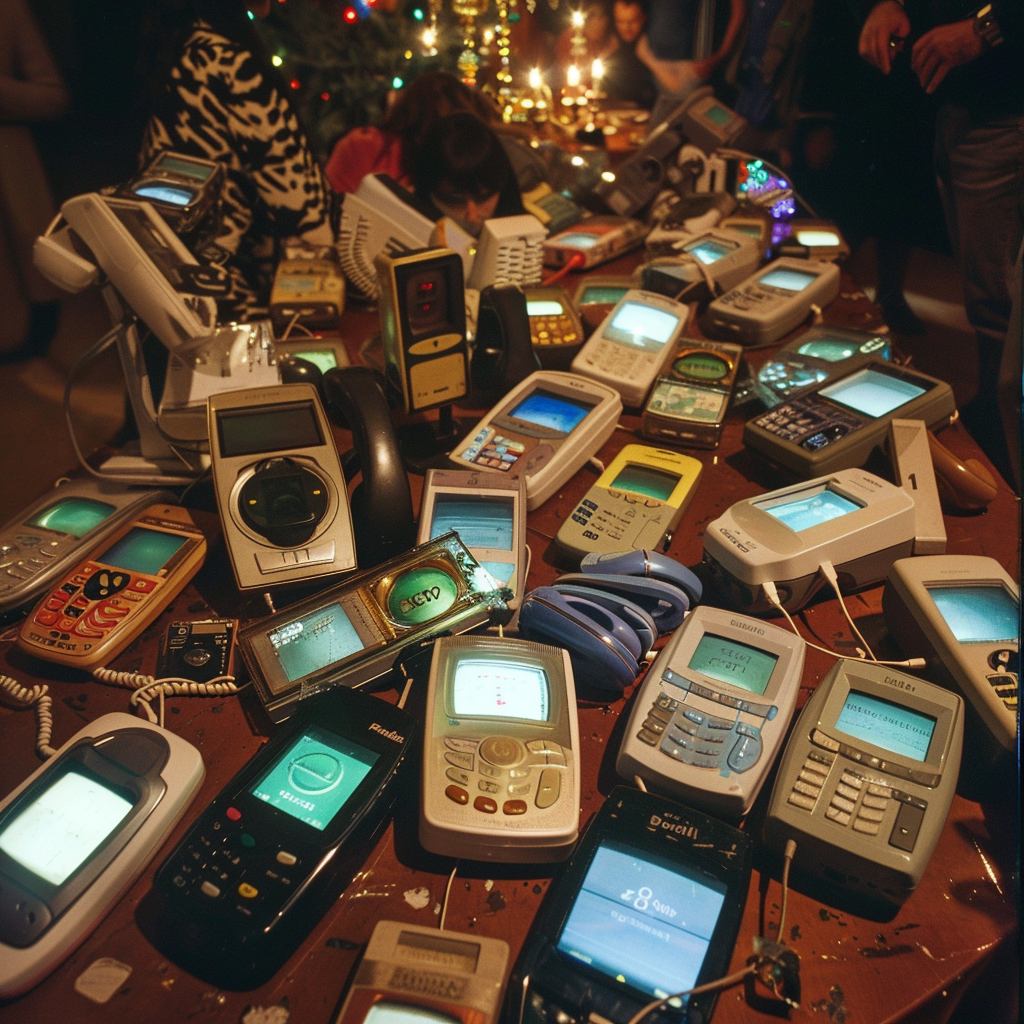In this series we will expose the reality of what’s happening in A2P SMS over the years. We’ll review how the current situation can and will be solved, through mitigations the industry must adopt.
This series is based on extensive research through 2024, it is not a complete exposé. However, the main mechanisms and mitigations are covered.
In the beginning (1992-2000)
The first SMS (Short Message/Messaging Service) was an A2P (Application to Person) message sent in 1992. A Merry Christmas message sent over the Vodafone GSM network in the United Kingdom by Neil Papworth from Sema Group using a personal computer to Richard Jarvis of Vodafone using an Orbitel 901 handset.
Through the ’90s SMS grew slowly for consumers, telcos were slow to interconnect SMS within a country, and prepaid accounts were blocked from using SMS because of billing risks, so kids could not yet use SMS. The reason, it was possible to change the SMSC (Short Message Service Center) settings on individual handsets to use the SMSCs of other operators.
It wasn’t until 1999 / 2000 most operators were interconnected, and the restrictions on prepaid accounts started being lifted as the billing issues were resolved. Then person to person (P2P) SMS began its rapid rise, and with that growth in popularity, businesses started to use A2P SMS through modems, and banks of modems.
There were some trail blazers in business applications, in 1996 Simon Woodhead founded eSMS / SIMWOOD, the first global SMS gateway between the Internet and mobile phones, a proto-SMS-aggregator. There were a couple of earlier country / region specific gateways, however, eSMS was global.
The unique feature of eSMS was e-mail<>SMS so someone would have an @esms.com address with delivery to their ordinary mobile phone. They could also reply directly as SMS and eSMS would send the email. Simon reverse engineered what turned out to be RFC822 (Standard for ARPA Internet Text Messages), though he was not aware of its existence.
And a shout out to that kid’s acumen, RFC822 is actually the email RFC, despite the title. Simon had to extract the plain text from the SMS encoding. Easy for mail clients written by people who’d read the RFC, a bit harder for a kid with reams of paper on his parents floor 🙂
In the early days of eSMS, their community email lists would share information on bugs, features requests, advice, etc. It was essential for supporting a global service. It was like the early days of the internet and the web.
More broadly, technologists from around the world interested in SMS shared ideas and even code on websites, even on how to use foreign SMSCs to transmit and receive SMS between carriers within a country without being charged. Whether they worked or not was another matter. Remember the bulletin board days of hours-long downloads for in the end a corrupted *.exe or *.mp3.
Some in the early SMS application businesses took advantage of this ‘wild west’ between the mid to late nineties. The matrices were constantly evolving as carriers closed routes and improved billing. Businesses would hold their breath as they received van-loads of itemized bills each month that came to zero charge. Soon the gaps were filled, and those businesses evolved. Some of the early SMS movers then focused on the explosion happening on the web. Just like with AI today, it was a crazy, fast moving time.
There were lots of financial alerting and ticker services to your desktop email. eSMS delivered those emails to the phone using SMS, e.g. stock alerts to traders. I knew one of eSMS’s customers who lived close by in Ipswich and worked in the City of London. Those mobile alerts on the train to/from the City of London were invaluable when the train was delayed.
The business model was a subscription service between eSMS and the bank or its employees. Also the Blackberry device entered the scene in 1999, so email could be received directly on that device, and within the control of the IT department. Blackberry had a good run until 2011, when the iPhone and Android-based smartphones took over, and mobile email became mass market.
But hidden underneath the big headlines, those technologists sharing SMS tips and tricks via websites or email distribution lists were continuing to evolve and focusing on opportunities within the emerging category of A2P SMS. eSMS / Simwood went on to focus on wholesale voice and value added services.
Articles in this series
Truth in A2P SMS, Part 1 of 5, In the Beginning & Foreign SMSCs. https://blog.tadsummit.com/2024/07/29/truth-in-a2p-sms-part-1/
Truth in A2P SMS, Part 2 of 5, Premium SMS. https://blog.tadsummit.com/2024/08/01/truth-in-a2p-sms-part-2-of-5/
Truth in A2P SMS, Part 3 of 5, First phase of SIM farms & Non-interworking Agreements and Gray Routes. https://blog.tadsummit.com/2024/08/05/truth-in-a2p-sms-part-3/
Truth in A2P SMS, Part 4 of 5. SIM Farms 2.0, AIT, Exclusivity, Control, A2P Revenue Assurance. https://blog.tadsummit.com/2024/08/07/truth-in-a2p-sms-4/
Truth in A2P SMS, Part 5 of 5. Mitigations: SMS Governance / Certification and Published Rates, RCS Fraud, Current Situation. https://blog.tadsummit.com/2024/08/09/truth-in-a2p-sms-3/


Great history